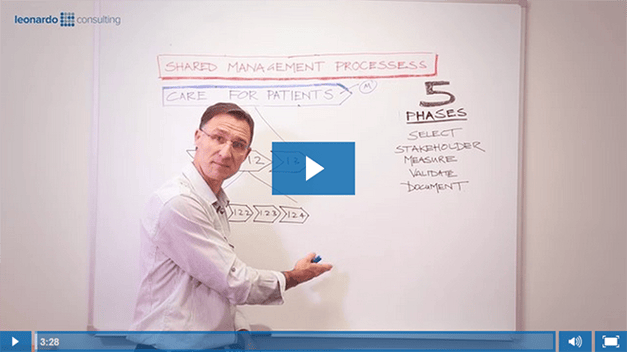The Process Session is a weekly video series posted on The Leonardo Blog that discusses all things BPM and Enterprise Architecture.
Today, Marco talks about Process Measurement.
Please let us know if you have any ideas for future topics for The Process Session.
Video Transcription - Process Measurement
Thank you for joining me again today for The Process Session. Today we are talking about the 7 Enablers of Business Process Management. Last time, we spoke about Process Architecture. Today we're going to talk about Process Measurement.
There are five phases of process measurement:
- select,
- stakeholders,
- measures,
- validate
- document
You apply these phases to your processes within your process architecture. If we have a look at the process architecture we showed last time for a hospital - we selected the core process; we do have the management and support processes - we would select one core process to measure.
Now we're into the select phase. Where in there do we want to measure to give us the key measures at the output? We want one or two critical measures at the value chain level that is made up of all the decomposed processes that allow the measures to aggregate into a key performance indicator we wanted in the process architecture so that we can understand:
- Where does it fit?
- What is the impact on it?
- How does it reflect?
- How does it perform?
If we have a look at the next phase – it’s stakeholders. Which stakeholders are involved in the care for patients value screen? It may not be all people within that organization and it may not be certain regulatory bodies or other stakeholders in the industry. So it's understanding who these people are, and sometimes that is the customer, and involving them in understanding what should these measures be. That stakeholder analysis is then pulled together, so we can understand how the people involved in this process are influenced (or should be influenced) to get the value that we're looking for and to deliver on the strategic objectives our process architecture and business.
Once we've got that we put a whole heap of measures in place to see what could we be measuring. Then after that we validate what was measured to see whether in fact they are correct and to ensure that at the lower levels we are not operating at perverse incentives where certain measures are counterproductive to other measures - but that they all do flow up correctly and achieve what we are wanting to achieve at a higher level of process. Then we need to put document controls in place where we can lock down and ensure that the process is our mistake- proof so that they can't easily go out of control. We show and develop methods around that on how we can mistake-state proof the process.
So that's in essence how we follow our methodology in detail to deliver the correct measures for the correct process in our process architecture. So thank you for joining me today. Next time we will talk about governance - how people are put in place in your organization to be able to respond to the process performance measures.





